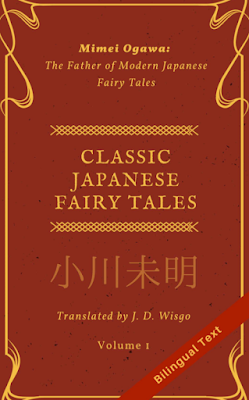"The Woman In White" by Wilkie Collins (published 1859)
| Wilkie Collins’ novel The Woman In White has themes that may seem cliché: love conquers all, the truth will always come out in the end, people with an air of superiority usually have something to cover up… as Alexander Pope once said, “Charms strike the sight, but merit wins the soul.” Collins’ The Woman In White proves that, and is everything but cliché. This lengthy masterpiece of a novel is part sensation novel, part mystery, part social commentary, and of course, like every good story, part romance. It is a book that probably should be read slowly so as to savor every idea and emotion offered by this talented writer. And to read this novel slowly is exactly how it was read in 19th century England, when Collins submitted his story, chapter by chapter, week by week, to Charles Dickens’ magazine, All the Year Round. Victorians consumed this novel like starving animals from the year 1859-1860. This was a time of excess and pleasure, and “grandiose” performance (Sweet, Introduction). The Woman In White is considered one of, if not the first “sensation” novel, which was said to be “preaching to the nerves instead of the judgment” (H.L. Mansel, yr. 1863). The story takes place in mid-19th Century England. The mystery is told from many different perspectives. Each character tells the story in the first person, and reports on their views and opinions, as well as factual occurrences and observations of character and events of a complex, emotional, cultural, and political nature. These accounts are written as testimonials, which are perhaps so believable in content because Wilkie Collins himself was a degreed lawyer. The story begins from the pen of Walter Hartright, an English painter, who is the main character. After a modest childhood, he earns a job as a drawing master at the Limmeridge house in Cumberland. His pupil, Laura Fairlie, a woman born into upper middle class wealth, is a sweet, loving, beautiful woman who, over time, falls in love with Walter, and he falls in love with her in return. Walter gives Laura consideration and sympathy for her meek nature, and Laura, in turn, gives him simple pleasures, such as quaint paintings and music – she is also a pianist. Like many novels of this time period, detail is of utmost importance. The Limmeridge house is big and lofty, with high windows that let in light from the sun during the day and light from the moon at night. Soft winds flow through the halls during the warmer seasons, and Walter, Laura, and Marian (Laura’s beloved half-sister) can be seen in the mind’s eye; one playing Mozart on a grand piano, one reading and writing at a study desk, and one lounging on a soft cushioned chair talking quietly about, yes, matters of importance and inexplicable mystery. Candles which are lit at nighttime are not burning on one particular night, because the moonlit room is just bright enough. The plot thickens when it is revealed that Laura Fairlie and Walter Hartright cannot act on their feelings for one another. Laura Fairlie is engaged to be wed to a tyrant, another Englishman named Sir Percival Glyde, who was similarly born into wealth. This marriage was previously arranged by Laura’s late father and her uncle, with Laura’s consent regarding her father’s wishes. Little does anyone know about Sir Percival’s familial secrets and his evil persona and quick temper. There is really no way to escape this situation, and so Laura and Walter finally part from each other, one in deep sorrow, the other in tears. So who is the woman in white? The short answer is this: the woman in white is a mysterious ghost-like lady that Walter met in a shadowy town path on his first trip to Limmeridge. The woman in white was sickly as well as kind, with cold hands but a warm heart - and - dressed in all white. Walter doesn’t thinks the meeting was odd, but doesn't think much else until he realizes later that she resembles Laura in a very strange and unsettling way. Later all of the characters find out the history of this woman. Her place in the interweaving of this story is unknown until the end. And so the mystery comes in at full force: what secrets are behind Sir Percival’s madness? Who is this frail woman dressed all in white? How can Laura Fairlie escape the cage that society has placed her in? Of note are other major characters: Count Fosco and Professor Pesca – two Italian men with nothing in common but one man’s desire for retribution. This begs the question: what are these Italian men doing in Victorian Era England and why is one of them a constant companion of Sir Percival? The story offers a look into the mind of amateur sleuths and the step-by-step process by which a non-professional investigator might work, with themes regarding human law, ethics, and morality. Similar Authors and Works include The Westing Game by Ellen Raskin, for its notable “classic mystery” status, The Moonstone by Wilkie Collins, for its literary style of offering different voices/narrators within the novel, and Lady Audley’s Secret by Mary Elizabeth Braddon, for genre: mystery, gothic, classic, and sensation novel. Relevant NonFiction Works and Authors include The Italian Boy: A Tale Of Murder And Bodysnatching by Sarah Wise, for its exploration of Italian culture in Victorian Era England, Destiny Of The Republic: A Tale Of Madness, Medicine, And The Murder Of A President by Candice Millard, for its dramatic storytelling and look into national 19th century themes (this one, for the U.S.A.), Opal: A Life Of Enchanted, Mystery, And Madness by Katherine Beck, for its exploration of femininity, its first person narrative, and exploration of psychology. |




Comments
Post a Comment